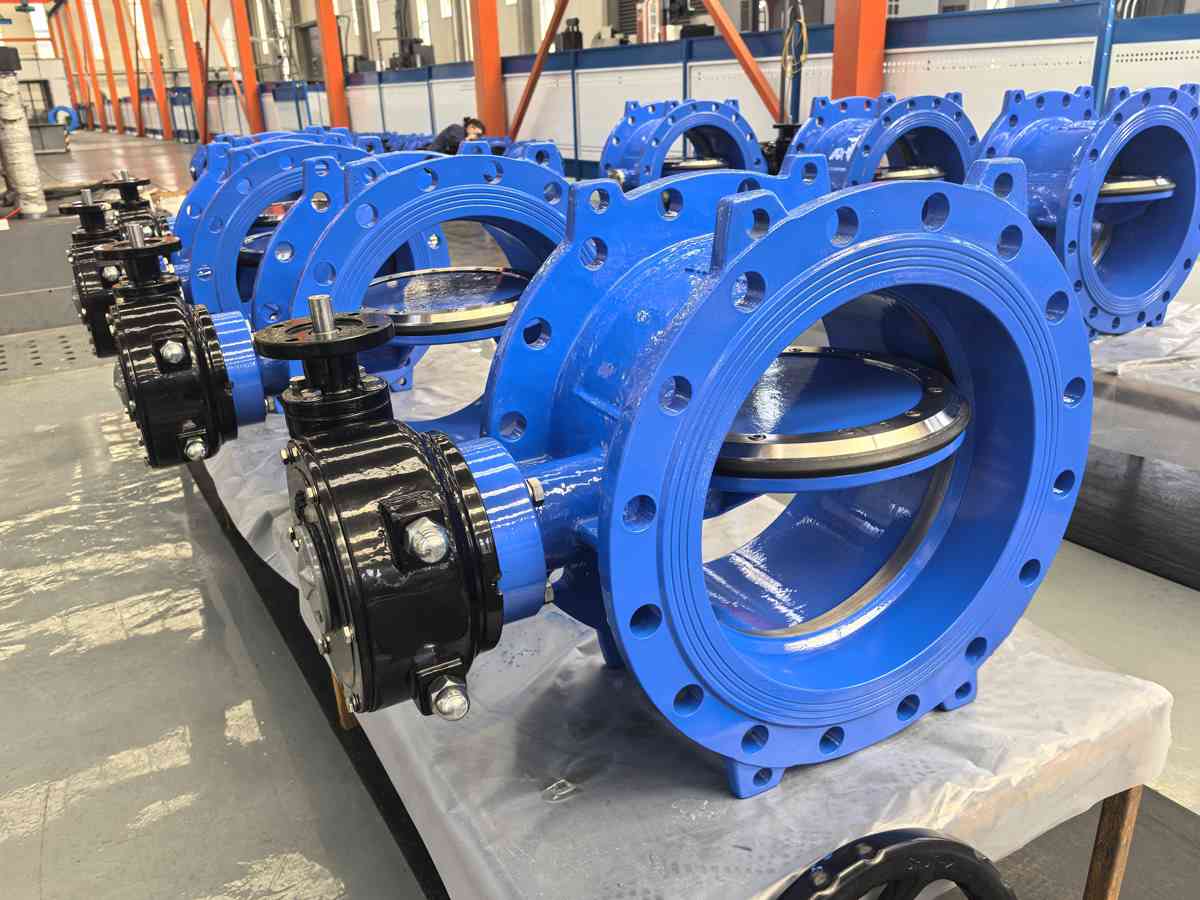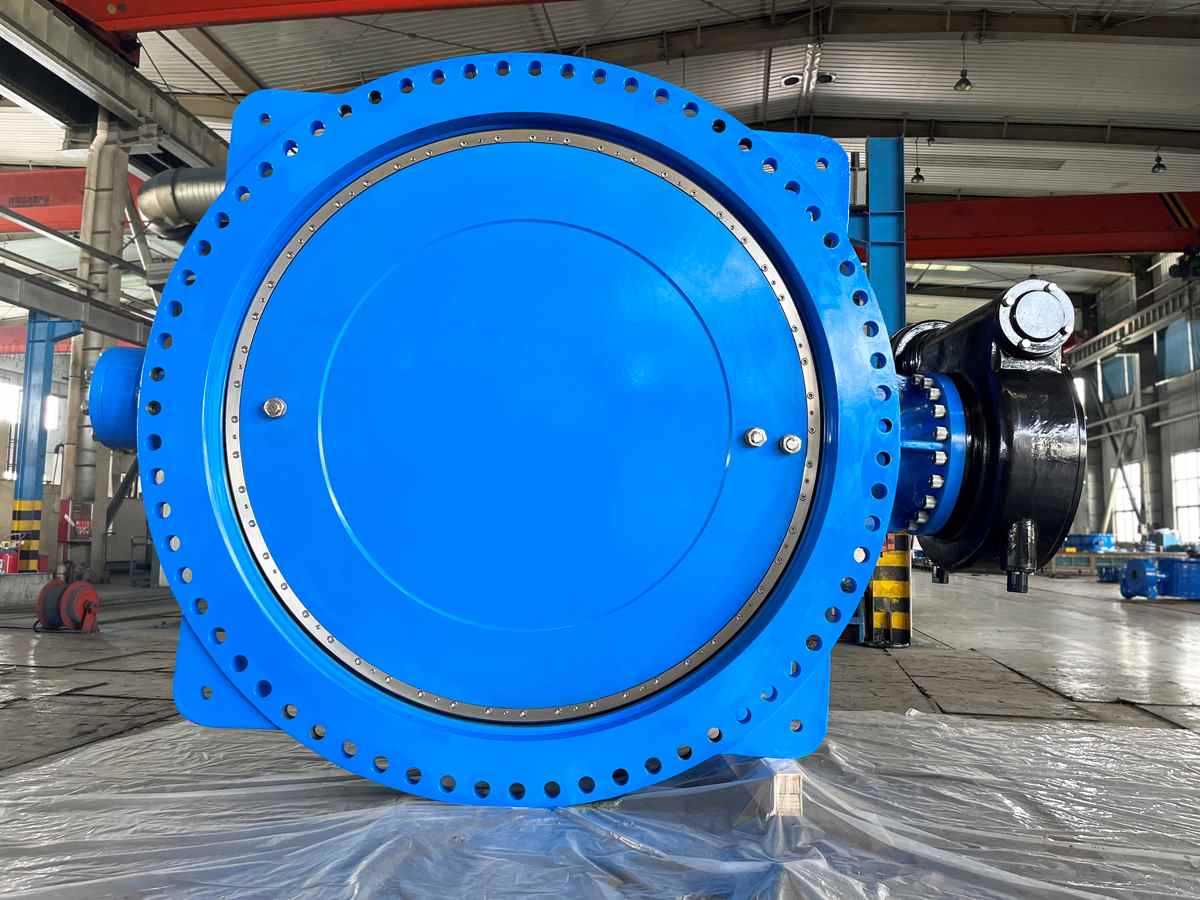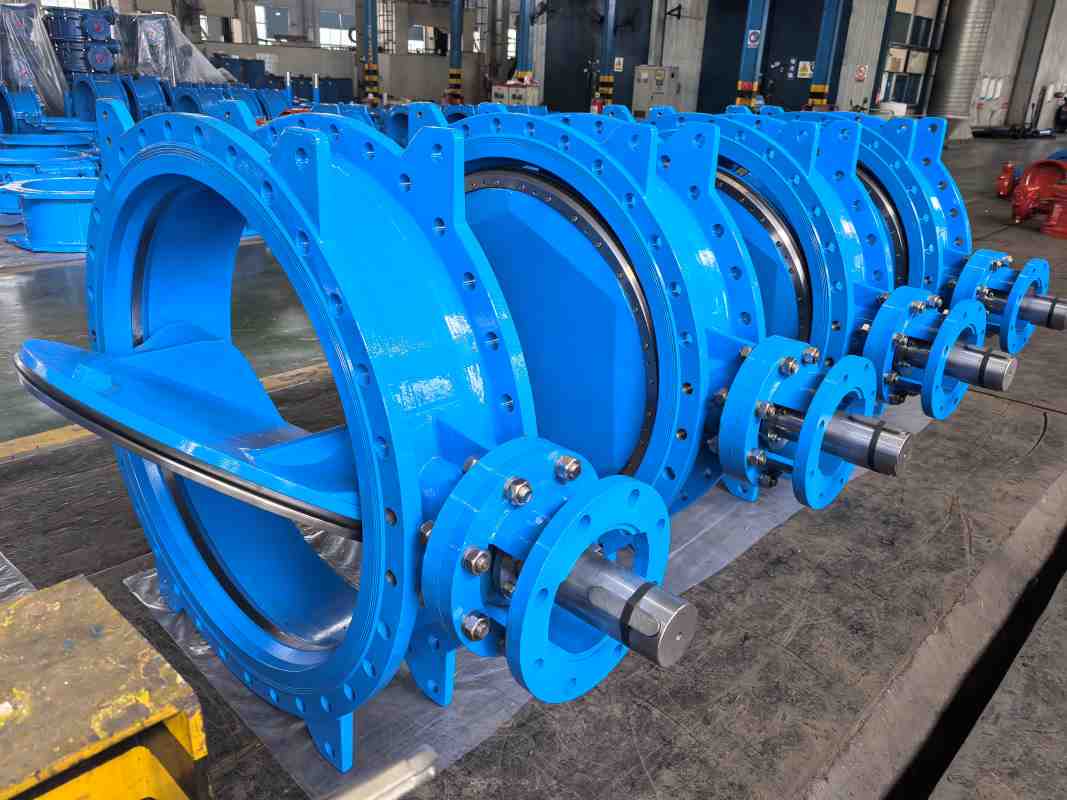When it comes to controlling the flow of fluids in pipelines, valves are a crucial component. Among the various types, the double-eccentric butterfly valve stands out due to its unique design and versatile functionality. In this article, we will delve into the working principle of double-eccentric butterfly valves, the advantages they offer, their sealing structure, and where they are typically used. We will also discuss some key considerations for selecting the right valve for specific applications.
What Is a Double-Eccentric Butterfly Valve?
A double-eccentric butterfly valve is a type of valve where the axis of the valve stem is offset from both the center of the disc (butterfly) and the center of the valve body. This design creates two eccentricities, hence the name “double-eccentric.” The unique positioning of the stem axis allows the valve disc to quickly disengage from the valve seat during operation, reducing friction and wear.
This mechanism provides enhanced control over fluid flow while minimizing the risk of seat damage. The double-eccentric design helps to improve sealing performance and extends the life of the valve, making it an ideal choice for various industrial and water engineering applications.
Advantages of Double-Eccentric Butterfly Valves
Double-eccentric butterfly valves are favored for several reasons:
Enhanced Sealing Performance: The disc design ensures that the valve provides an effective and tight seal. During operation, the disc’s motion minimizes direct contact with the valve seat, which prevents excessive friction and wear.
Reduced Wear and Tear: When the valve is opened, the disc moves away from the seat without excessive pressure. This feature significantly reduces the risk of seat damage, which is a common issue with traditional butterfly valves. The reduced wear leads to longer service life and lower maintenance costs.
Compact Size with High Pressure Resistance: Despite their small size, double-eccentric butterfly valves can withstand high pressures. This makes them suitable for various fluid control systems where space is limited but pressure resistance is required.
Improved Flow Efficiency: The streamlined design of the disc reduces flow resistance, ensuring that the valve offers smoother fluid flow with minimal turbulence.
Cost-Effective: Due to their efficient design and minimal maintenance needs, double-eccentric butterfly valves are often more cost-effective compared to other valve types, particularly in systems requiring frequent operation.
Sealing Structure of Double-Eccentric Butterfly Valves
The sealing mechanism of a double-eccentric butterfly valve is crucial for its performance. Typically, the valve uses either a soft seal or a hard seal structure, depending on the application:
Soft Seal Valves: These valves use sealing rings made of materials such as rubber or PTFE (Polytetrafluoroethylene). Soft-sealed butterfly valves offer excellent sealing capabilities and are often used in applications where a high degree of leak-tightness is required.
Hard Seal Valves: Hard-sealed butterfly valves, on the other hand, employ metal seals made of stainless steel, copper alloys, or other durable materials. These valves are suitable for high-temperature or high-pressure applications where soft seals might not be adequate.
Applications of Double-Eccentric Butterfly Valves
Double-eccentric butterfly valves are versatile and can be used in a variety of industries. Some common applications include:
Water Engineering: One of the primary applications of double-eccentric butterfly valves is in water treatment and distribution systems. These valves are often used in drinking water pipelines and wastewater treatment plants due to their excellent sealing properties and resistance to wear. With certifications such as EN1074-1 & EN1074-2 and WRAS approval, they are suitable for potable water applications.
Flow Control in Industrial Systems: Because double-eccentric butterfly valves can regulate the flow of fluids, they are commonly used in industrial systems where precise flow control is required. These systems could involve the flow of chemicals, gases, or other liquids in industries such as pharmaceuticals, chemicals, and food processing.
HVAC Systems: In heating, ventilation, and air conditioning systems, double-eccentric butterfly valves are used to control air flow and pressure. Their quick response time and low maintenance needs make them an excellent choice for HVAC applications.
Oil and Gas Pipelines: Due to their durability and resistance to harsh conditions, double-eccentric butterfly valves are also employed in the oil and gas industry. These valves are used to regulate the flow of oil, natural gas, and other fluids in pipelines.
Principles for Selecting a Double-Eccentric Butterfly Valve
When selecting a double-eccentric butterfly valve for a specific application, several factors should be considered:
Pressure Loss: Butterfly valves generally have higher pressure losses compared to gate or ball valves. As such, they are best suited for systems where pressure loss is not a critical concern. If minimal pressure loss is essential, other valve types may be more suitable.
Flow Control: If the application requires precise flow control, a double-eccentric butterfly valve is a good choice. Its design allows for easy regulation of flow, making it ideal for systems where adjusting the flow rate is necessary.
Temperature and Pressure Limits: Double-eccentric butterfly valves are typically used in systems with temperatures below 300°C and pressure ratings below PN40. For high-temperature or high-pressure systems, it is essential to choose valves that can withstand such conditions, which may require specialized materials or designs.
Size and Space Constraints: The compact design of butterfly valves makes them ideal for situations where space is limited. Additionally, they are available in large diameters (e.g., DN1000 or more), making them suitable for applications that require large-diameter valves.
Speed of Operation: Because a double-eccentric butterfly valve only requires a 90° rotation to open or close, it is suitable for applications where quick operation is necessary. These valves are commonly used in situations that demand fast shut-off or start-up.
Conclusion
Double-eccentric butterfly valves are an essential part of modern fluid control systems. Their unique design, which reduces wear and improves sealing performance, makes them an excellent choice for a wide range of applications, particularly in water engineering and industrial systems. By understanding their advantages, sealing structures, and appropriate applications, you can make an informed decision when selecting the right valve for your specific needs.
Whether you are working with water distribution, chemical processing, or HVAC systems, the double-eccentric butterfly valve offers a reliable and cost-effective solution to ensure smooth, efficient fluid flow.
Post time: Aug-14-2025





